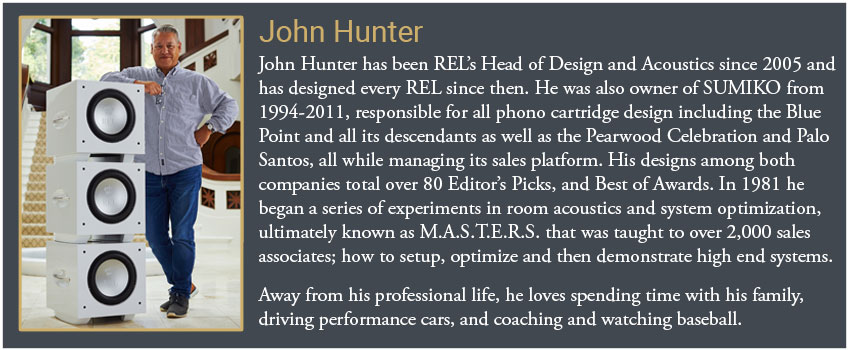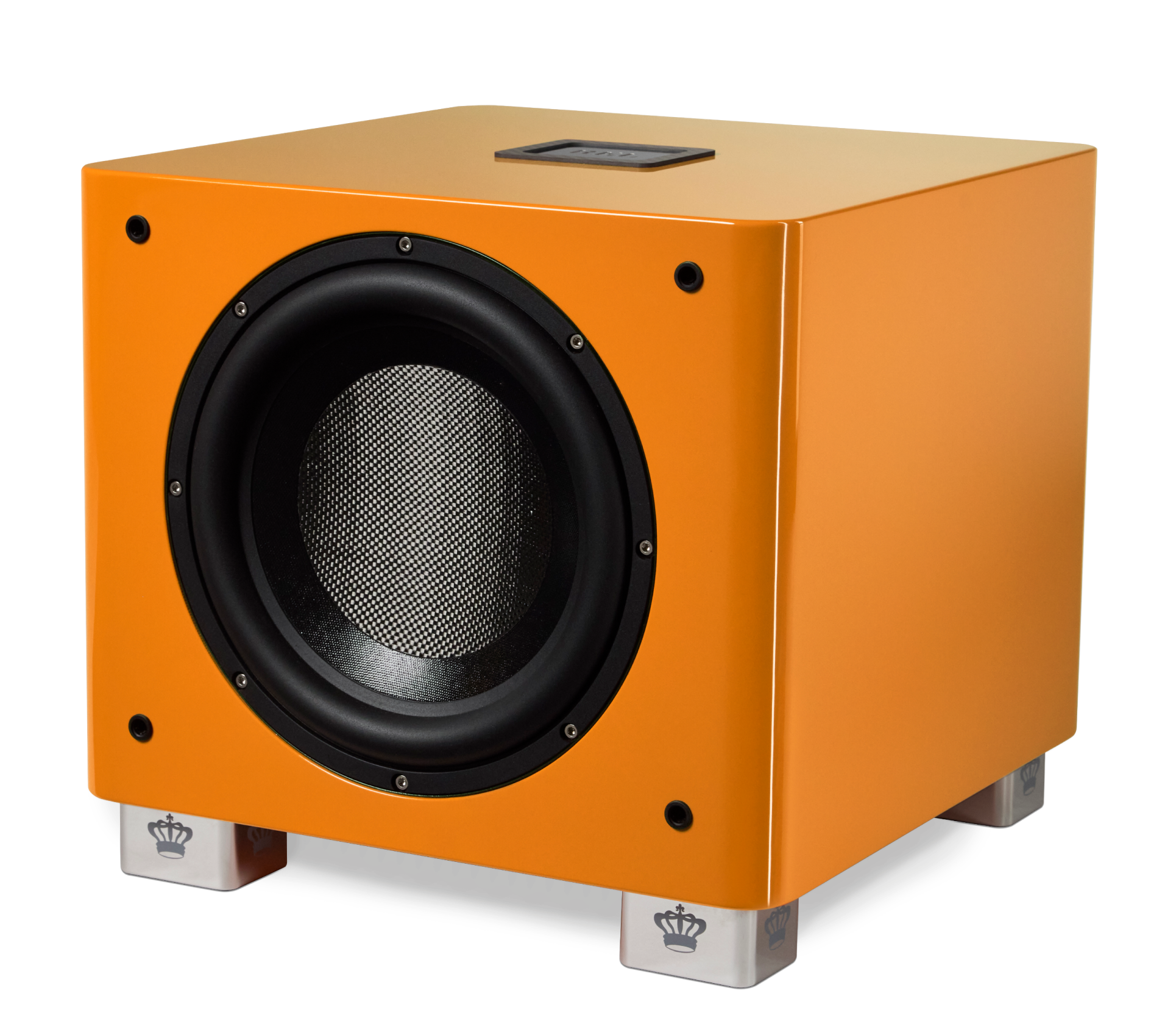Blog
Serie T/x Journey
The Making of Serie T/x
“Enjoy these new T/x models, they’re something very special indeed.”
–John Hunter, REL
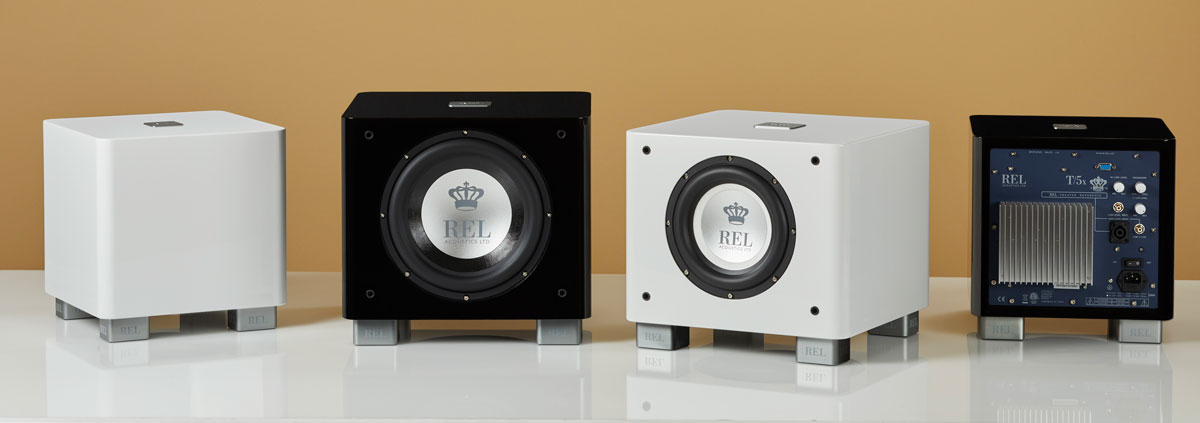
Some design journeys are dynamic, some strange, most are humbling. The journey we took with T/x was all that. And surprising too.
Honestly, every line update (from R to S, from T to T/i) over the past decade was filled with some degree of nervousness based on a very real concern: “How do we top what we accomplished before? Will our latest be enough better?” The fear comes from the fact that we don’t cookbook our scripts. What makes RELs unique is that they are so clearly the result of the human experience of constant, ongoing development. Of polishing and honing hard fought victories that tell us more truth about the musical experience we all crave.
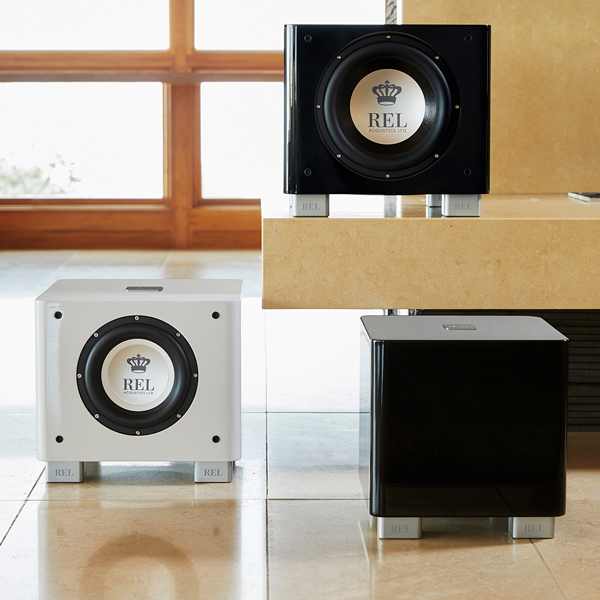
We think of things, discover things in how we perceive and experience not just bass, but music rendered wideband over 10-to-12 octaves. This stuff piles up in our brains, it is processed late at night as one drifts off to sleep. We don’t have the luxury of cramming $1.58 DSP chips into our front ends and showing ruler straight frequency response charts, like lines of print on a kindergartner’s homework: “You get a gold star Johnny.” While that makes some people feel good and safe and like they understand what the basic parameters of subwoofer performance are, in some absurd reductionist desire to create order out of chaos, it simply doesn’t work. In fact, in my honest opinion, that approach sucks. We find it results in products that robotize music, that suck the life, the spark the collaborative genius out of music.
At the outset, one thing was crystal clear, we weren’t going to abandon the lovely Class A/B amplifiers used in every generation of T’s since I first conceived of bringing this now-magical formula to life back in 2006. Why couldn’t normal folks, those that didn’t have thousands to throw at high performance have it all too? Why couldn’t they own a little slice of the good life? Where the cabinet work is as beautifully wrought as the other guys’ best models? Using great drivers and powerful amps that were deeply reliable? Since we’d just managed to convert (in the 2005 first gen R-Series) the cumbersome filters of antique RELs into significantly faster, easier-to-use simple knobs that intuitively got higher as you turned them clockwise we chose to use this new style of input filter. They fed into these wonderfully developed Class A/B amplifiers with lovely, big toroidal transformers and large, well-regulated power supplies. And to this day, they almost never break.
The statistical record of longevity of Serie T’s over the years defies modern business analysis. We have had numerous business analysts in over the years to tweak some part of our model or another and they all come up to us at some point and ask, “Uh, about the long-term defect rate in your products, we think there must be some problem.” Oh, what’s that? “Uh, well, it’s um low. Extremely low. We’ve actually never seen numbers this low so we were just wondering if maybe there was a reporting error in your system or something?” The answer to them and you is, “No, there is no reporting abnormality.” There is only one thing; very well-designed and constructed amplifiers with large safety margins built-in so that they run reliably for years and years. And if they stop running after 15 or 20 years of continuous hard usage (there are precisely zero subwoofers in this world that do not experience frequent hard usage) they are made to be repaired with relative ease.
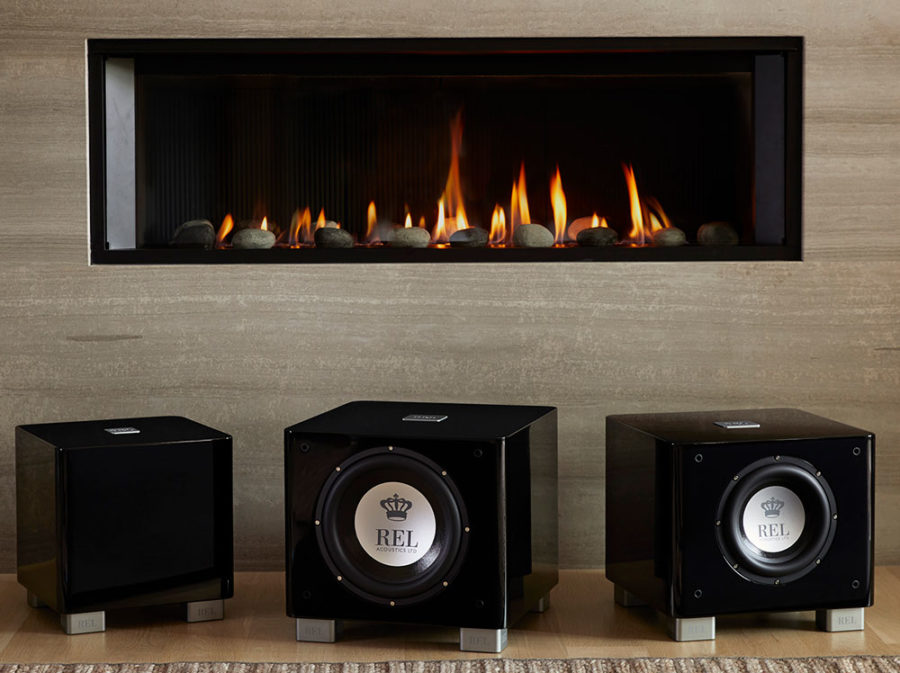
So, the amplifiers were in, no more conversation to be had about them. And there was nothing in the basic design of our drivers that I had found wanting in the T/i drivers, so apart from minor tweaks I couldn’t see a way to make them significantly better. Which leaves the cabinet, a component that most customers think of as being the “pretty” part of the design but to the engineer in all of us is responsible for developing precisely the correct volume of air to maximize performance in our RELs.
This, I already had a plan for; one derived directly from successes learned during development of the 212/SX and the newest Serie S models. That not only the volume, but the proportions of the key ratios defining Height, Depth and Width play crucial roles in how a driver behaves within otherwise identical volumes. As does, of course, the internal damping. Too much and the sound goes dead, too little and it trivializes music. Bopping along like an old school children’s toy with a bouncing head.
So, how would I generate upgraded dynamics with so little new to work with? The only avenue left was to increase the volume of air within. Add too much and we lose control of the backwave, too little and the increase will have zero effect. In the end, each unit grew 5-7% internally. But they also received radiused structural corners that add mass and eliminated hard corners that can trap pockets of air pressure. And they became heavier, the alloy feet grew and became more integral in delivering greater solidity and clarity.
SURPRISE! So, here’s where the surprise comes in. We received the samples later than usual, creating rounded corners turns out to be not easy to do well (I’ll do a blog on that at a later date. How we do this is pure high tech and results in perfect and perfectly repeatable corners. We’ve been using this technique and special tooling for years on our Reference designs). And they caused us to scramble. Initially, the sound was loose, soft, a little sloppy a little dark. Okay, I reasoned, the Q or stiffness of our drivers needed to be adjusted to account for the additional cabinet volume. My friend Eric and I went back and forth a bit to get it just right and a month later a new round of samples arrived with new suspension clearly visible. A new, larger surround allowed greater travel AND a stiffer primary suspension while the new carbon spider (this part is responsible for perfectly locating the voice coil and keeps it centered at all volume levels) was clearly stiffer.

We popped them in and, as is normal for new drivers, had to run them for a couple hours. Leaving music playing, we set about other tasks upstairs. When we returned 3 hours later, an incredible transformation had taken place. Where the new drivers had been cold, stiff and tight, once broken in there was speed, spaciousness, clarity instead of tightness. This was far more than normal break in, this was the result of a perfect blend of driver tuning to increased cabinet volume. This was something special taking place right there in our development studio and instantly we knew we had something special.
All that was left was for Justin, our Chief Engineer, and I to set about the crucial tuning of the incoming gain set against the ultimate policeman, our 3-stage limiters. This tuning is done by ear using well-worn tracks followed up by duplicate testing of the .1/LFE channel only and has a profound effect on the character of each REL line.
Two months of careful tuning later, we realized we had stopped using the matching older T/i models as working reference bogies and had been using the S/510 as our internal reference. This struck us as significant, since the new Serie S are quite clearly the best medium chassis/medium cost performers out there and are known for their remarkable transparency and dynamics. And yet, what we had clearly struck upon with the new T/x range was a miniature Serie S avatar, not an updated T/i. The only thing they wouldn’t offer was to be stackable, although we played around with this concept a bit. But that is another story for another day.
For now, know that the new T/x are not a little better than the outgoing T/i, they are surprisingly better in every regard. They have that jump factor that larger, dearer RELs have, they preserve remarkable clarity and tension (at this price range we’ve never heard better), and they have incredible dynamics both because they render the smallest passages with greater delicacy but also how they explode vertically. Surprising, and highly gratifying.
Enjoy these new T/x models, they’re something very special.
